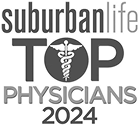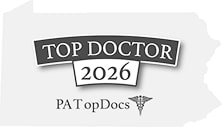Tendonitis Treatment
Tendonitis occurs when tendons become inflamed or irritated from overuse, strain, or injury, leading to pain and stiffness that limit movement. At Meeting Point Health, we treat tendonitis with regenerative therapies such as PRP, Prolotherapy, and Shockwave Therapy to stimulate healing and strengthen the affected tissue. Our goal is to relieve pain, restore flexibility, and support lasting recovery so you can move with ease again.
What is Tendonitis?
Tendonitis is a condition marked by pain, inflammation, and swelling in a tendon, often resulting from structural damage to the tissue. It commonly affects individuals who engage in strenuous or repetitive activities, such as runners, weightlifters, or those with occupations involving repetitive motions. Tendonitis can sometimes present on both sides of the body, making it challenging to pinpoint the exact tendon involved. The condition is typically caused by acute or repetitive microtrauma to the tendon and is characterized by symptoms such as localized pain, swelling, warmth, stiffness, redness, restricted range of motion, decreased strength, crepitus (a grinding sensation), and even a loss of active motion in the affected area. At Meeting Point Health, we provide comprehensive care to address tendonitis, focusing on relieving symptoms and promoting long-term healing.
What are symptoms of tendonitis?
- Restricted Range of Motion (ROM): Limited ability to move the affected joint fully.
- Decreased Strength: Weakness in the muscles connected to the affected tendon.
- Crepitus: A grinding or crackling sensation when moving the joint or tendon.
- Tenderness: Sensitivity or discomfort when touching the affected area.
- Loss of Active Motion: In severe cases, the inability to move the joint actively due to pain or stiffness.
- Localized Pain: A sharp or aching pain that worsens with movement or activity involving the affected tendon.
- Swelling: Noticeable inflammation or puffiness around the tendon.
- Warmth and Redness: The affected area may feel warm to the touch and appear red due to inflammation.
- Stiffness: Difficulty moving the joint associated with the tendon, especially after periods of inactivity.
If you’re experiencing these symptoms, it’s important to seek an evaluation to determine the best course of treatment. At Meeting Point Health, we specialize in personalized care to reduce pain, restore mobility, and prevent further damage.
What are the most common areas of tendonitis?
Rotator Cuff
Rotator cuff tendonitis is a common condition that affects the tendons of the rotator cuff, a group of muscles and tendons that stabilize the shoulder joint and facilitate arm movement. This condition is characterized by inflammation, irritation, or degeneration of these tendons, often caused by overuse, repetitive motions, or trauma.
Achilles Tendon
Achilles tendonitis is characterized by inflammation, irritation, or microtears in the Achilles tendon, the largest tendon in the body. This tendon connects the calf muscles to the heel bone and is essential for walking, running, and jumping. Achilles tendonitis often results from overuse or strain and is common among athletes and active individuals.
Symptoms of Achilles Tendonitis:
- Pain and Stiffness: Often felt at the back of the ankle, especially in the morning or after periods of inactivity.
- Swelling: Visible inflammation along the tendon or near the heel.
- Tenderness: The area may be sensitive to touch or pressure.
- Thickening of the Tendon: Chronic cases can lead to noticeable thickening of the tendon.
- Difficulty Walking or Running: Pain increases with activity, particularly when pushing off the toes or climbing stairs.
- Crepitus: A crackling or crunching sensation during movement.
Hand and Wrist Tendonitis
Hand and wrist tendonitis is a condition characterized by inflammation and irritation of the tendons in the hands and wrists. These tendons are responsible for facilitating precise movements of the fingers, hand, and wrist, and when they become inflamed, it can significantly impact daily activities. This condition is often caused by repetitive motions, overuse, or acute trauma, and it is commonly seen in individuals who perform tasks requiring fine motor skills or repetitive wrist movements, such as typing, crafting, or playing sports.
Common Types of Hand and Wrist Tendonitis:
- De Quervain’s Tenosynovitis: Inflammation of the tendons on the thumb side of the wrist, often caused by repetitive thumb movements or gripping.
- Trigger Finger: Inflammation in the tendons of the fingers, leading to pain, stiffness, and a locking sensation during movement.
- Flexor or Extensor Tendonitis: Involves the tendons that bend (flexors) or straighten (extensors) the fingers and wrist.
Foot and Ankle Tendonitis
Foot and ankle tendonitis is a common condition characterized by inflammation and irritation of the tendons that support movement and stability in the feet and ankles. These tendons play a critical role in activities such as walking, running, jumping, and balancing. Tendonitis in this area often results from overuse, repetitive strain, or acute injuries, making it particularly common among athletes, active individuals, and those with jobs requiring prolonged standing or walking.
Common Types of Foot and Ankle Tendonitis
- Flexor Tendonitis: Affects the tendons that run along the bottom of the foot and flex the toes, typically from overuse or trauma.
- Achilles Tendonitis: Inflammation of the tendon connecting the calf muscles to the heel, often caused by overuse.
- Posterior Tibial Tendonitis: Affects the tendon that supports the arch of the foot, often leading to flatfoot if untreated.
- Peroneal Tendonitis: Involves the tendons on the outer side of the ankle, frequently seen in runners or individuals with high arches.
- Extensor Tendonitis: Inflammation of the tendons on the top of the foot, often caused by tight shoes or excessive walking or running.
Tendonitis Treatment Options in Philadelphia
At Meeting Point Health, we take a comprehensive and personalized approach to treating tendonitis, focusing on reducing pain, restoring function, and addressing the condition’s root cause. Our treatment plans combine advanced regenerative medicine techniques with holistic care to promote long-lasting healing. Contact Meeting Point Health today to schedule your personalized consultation and start your journey to relief. Your path to recovery begins here!
Prolotherapy
Prolotherapy therapy is a medical injection procedure whose goal is to relieve pain and promote healing of musculoskeletal conditions, especially involving ligaments, joints, and tendons. Prolotherapy stimulates healing, causes inflammatory responses that increase blood flow and the arrival of immune cells and growth factors to the injection area, and tissue repair.
PRP Therapy
Platelet-rich plasma PRP therapy is a medical treatment that involves the use of a patient’s own blood to promote healing and tissue regeneration. Once injected, the growth factors and other bioactive substances in PRP work to accelerate tissue repair, reduce inflammation, and promote the formation of new blood vessels. This helps in reducing pain, improving function, and enhancing the overall healing process.
Stem Cell Therapy
Stem cell injection therapy refers to a medical procedure in which stem cells are harvested from live, healthy birth tissue and then injected into a localized area on a patient’s body, typically to promote tissue repair, and regeneration, or to treat various medical conditions. Stem cells are unique because they can develop into different types of cells in the body, and they also have the capacity for self-renewal. This makes them valuable in medical treatments, as they can potentially replace or repair damaged or diseased tissues. Stem cell injection therapy can treat arthritic joints, sports injuries, tendinopathies, non-union fractures, meniscal tears, Degenerative Disc Disease, and Osteonecrosis or Avascular Necrosis.
Prolozone
Prolozone therapy is a mixture of ozone gas and a prolotherapy solution is injected into the affected area, often around joints, ligaments, or tendons. The theory is that this combination not only irritates and strengthens the tissues (like prolotherapy) but also delivers the potential therapeutic benefits of ozone, such as improved circulation and tissue oxygenation. Prolozone combines procaine, dextrose, B vitamins, saline, oxygen, and ozone into a damaged joint and the combination allows for regrowth of damaged tissue.
Peptide Therapy
Peptide Therapy can be introduced as an at-home treatment, and in-office for joint injection and nerve hydrodissection purposes. Peptide therapy introduces peptides to signal communication with our cells to perform a specific response. Administrating peptides elicits a response to regulate or improve physiological functions. For regenerative medicine, peptides for wound recovery, and tissue repair, reduce inflammation, accelerate recovery time, and promote cell migration and differentiation.
Acupuncture
Medical acupuncture uses needles to stimulate nerve activity, initiate muscle firing and induce the release of chemical substances such as neurotransmitters, endorphins, and hormones. This helps to reduce pain and boost your body’s natural healing ability.








